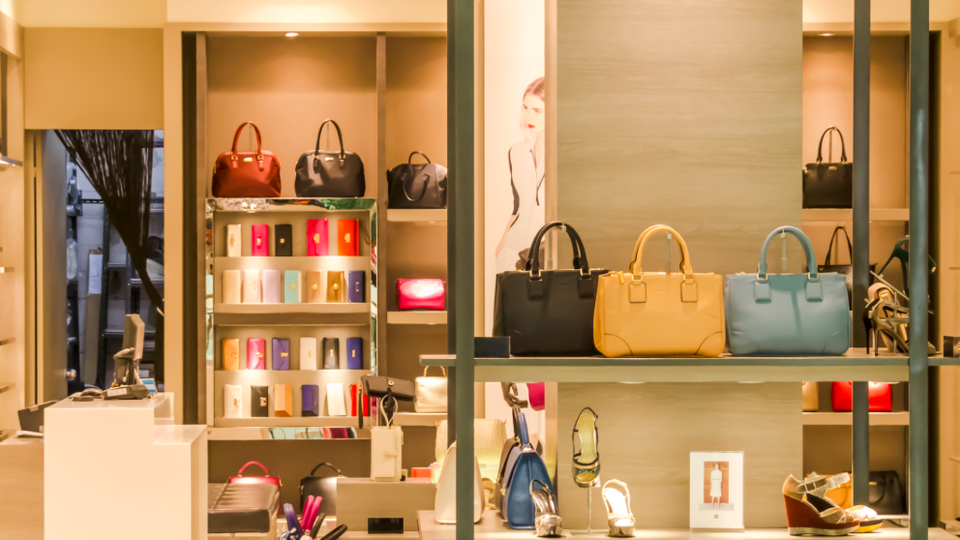
Do the names of all these properties sound familiar? They certainly should.
Do the names of all these properties sound familiar? They certainly should.
In Part I of this series, we highlight the landmark emporia in the region’s more mature markets (Hong Kong, Taiwan, Singapore, South Korea and Japan). In Part II, we’ll investigate the luxury malls and shopping centres you need to get to know better in the emerging and frontier markets of the Far East (mainland China & South East Asia).

Bella Vita
Taipei, Taiwan
Last year, Bella Vita opened to much fanfare as the Taiwanese capital’s latest luxury emporium in the fiercely competitive Xinyi District. Although the sprawling edifice includes the only restaurant in the country run by a Michelin-star chef (L’Atelier de Joel Robuchon) and enough upmarket retail floor space to make Harrods envious, its owners are reluctant to pigeon hole the mall as a strictly luxury venture.

Taipei 101 Shopping Mall
Taipei, Taiwan
Until the skyscraper was dwarfed by Dubai’s Burj Khalfia in 2010, Taipei 101 was the tallest building in the world. At its base are five floors of retail space, much of which is devoted to luxury fashion, lifestyle and culinary outlets. The mall’s prime location and spectacular view guarantees footfall but with department stores like Shin Kong Mitsukoshi and several branches of Sogo nearby – not to mention the New York New York Shopping Center and now Bella Vita – luxury consumers are spoiled for choice.

ION Orchard
Singapore
ION Orchard is the home of celebrity chefs and experimental gallery artists as well as a gamut of progressive luxury fashion and lifestyle monobrand boutiques. Since it opened last year, its has stolen some of the thunder from older multi-retail formats on the Orchard Road like Tangs, Isetan and Paragon – thanks in part to its modern mix of popular middle market and high street brands. ION is part of a larger luxury complex which includes high rise condominiums in the adjacent Orchard Residences.

Ngee Ann City
Singapore
At over 15-years old, Ngee Ann City is considered a veteran among the sparkling retail centres of South East Asia. Anchored by the Japanese department store Takashimaya, it has been upstaged by newer arrivals but business is brisk in homewares as well as the fine jewellery and designer accessory boutiques. ‘Taka’, as it is colloquially known, is also an important gateway for customers interested in trading up from the upper middle to the luxury segment.

Paragon
Singapore
One of Paragon’s USPs is its comprehensive assortment of fashion boutiques including many monobrands for second and diffusion lines. It recently got a facelift and, perhaps because of its long track record, the mall still seems able to leverage considerable influence locally as well as the ability to lure high profile tenants eager to outdo themselves with ever-larger flagships in the city-state. Gucci opened a colossal 5-story façaded shop in the shopping mall earlier this year.

The Landmark, Alexandra House, Chater House & Prince’s Building
Hong Kong
Although not strictly a mall, these four adjacent towers are connected by elevated walkways and owned by the same property developer, Hongkong Land, making the complex function as a cohesive shopping destination in the city’s Central financial district. Immense designer boutiques and fine dining establishments are either enclosed in atriums or on the periphery of the ground and lower floors of the buildings. The Hong Kong branch of Harvey Nichols and the Mandarin Oriental are The Landmark’s luxury tenant anchors.
www.hkland.com
The Landmark
Alexandra House
Chater House
Prince’s Building

Times Square
Hong Kong
Sometimes dubbed the city’s first ‘vertical mall’, the shopping centre in Times Square is spread over 11 stories in the Causeway Bay district. Including the Lane Crawford department store which occupies two floors, a total of four are devoted exclusively to luxury retail while others house several more luxury boutiques and multi-brands like D-Mop . Two towers have been allocated as office space.

The Mall at Pacific Place
Hong Kong
Pacific Place is another giant mixed use complex made up of offices, apartments and luxury retail, located in the Admiralty neighbourhood of Central. Several dozens of luxury monobrand stores occupy the lower floors of The Mall at Pacific Place alongside department stores such as Lane Crawford and Joyce. Five-star hotels on site include The Conrad Hong Kong, the Island Shangri-La, a JW Marriott and The Upper House.

IFC Mall
Hong Kong
Yet another sprawling luxury retail complex in the Central district is the International Finance Centre (IFC), of which four podium level floors are called the IFC Mall sandwiched between two skyscrapers. Besides Lane Crawford and a tower for The Four Seasons Hotel, many of the major luxury fashion and fine jewellery brands operate monobrand stores here.

Tokyo Midtown
Tokyo, Japan
Tokyo and other Japanese cities have long had a number of gargantuan department stores with shop-in-shop formats (like Takashimaya, Mitsukoshi, Hankyu, Matsuya and Ginza Komatsu) that would easily qualify as luxury shopping malls in all but name. But only recently have the country’s property tycoons begun to replicate the mixed-use integrated developments now common in other cities of East Asia. While parts of Tokyo’s Roppongi Hills and Omotesando Hills (see below) did open first, Tokyo Midtown was the real landmark luxury project among them, opening in 2007 in the city’s Akasaka district. Five floors of its Galleria building were earmarked for luxury fashion, beauty, interior and design boutiques and restaurants while fine jewellery shops were set across the Plaza in the Midtown Tower.

Roppongi Hills
Tokyo, Japan
Although many of the more famous luxury brands found in the Roppongi Hills development are in the open air zone on Keyakizaka Dori street, enough high-end boutiques and gourmet eateries are scattered throughout the enclosed areas of the expansive property – such as those in the Hillside zone – for one to argue that Roppongi Hills constitutes a luxury mall. By constructing a major art museum, gallery and exclusive social clubs in the complex next to the Grand Hyatt and other luxury residential/commercial towers, the developers clearly positioned much of the retail space as somewhere between the upmarket and luxury segments.

Omotesando Hills
Tokyo, Japan
Completed in 2005 by Minoru Mori, the same property mogul who created Roppongi Hills, this mall punches above its weight. Despite its more modest size, Omotesando Hills’s prime location on Omotesando Dori street in the fashionable Aoyama district means that it has attracted an interesting mix of lesser known luxury brands alongside the major names, the likes of whom already line the street outside.

AvenueL
Seoul, South Korea
Having been long dominated by a handful of department store groups (such as Shinsegae, Lotte and Hyundai), Korea’s multi-sector luxury retail market only recently blossomed into a few hybrid formats. Hanwha’s Galleria chain is sometimes more mall than department store but Lotte Group’s AvenueL is probably the closest thing to a bona fide luxury mall in Seoul at the moment. Once completed in 2013, however, The International Finance Centre Seoul will have a three story luxury shopping centre called the IFC Mall integrated into one of its three mixed-use towers.










